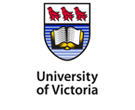Environmental justice in a toxic economy: Community struggles with environmental health disorders in Nova Scotia
| Title | Environmental justice in a toxic economy: Community struggles with environmental health disorders in Nova Scotia |
| Publication Type | Thesis |
| Year of Publication | 2002 |
| Authors | Thompson SJ |
| Advisor | Quarter J |
| Degree | Doctor of Philosophy Ph.D. |
| Number of Pages | 406 |
| University | University of Toronto (Canada) |
| City | Toronto, ON |
| Accession Number | AAT NQ69084 |
| Abstract | The impoverished communities of Whitney Pier and Pictou Landing in Nova Scotia are struggling against a toxic economy that degrades human and environmental health. Proponents of environmental justice see these communities as part of a larger pattern, in which the poor and people of colour are disproportionately exposed to environmental hazards from toxic development.In the United States, considerable research shows a strong correlation between environmental health risk and the social positions of race and class. In Canada, however, prior to this study, no comparable empirical research had been conducted. Through two approaches--statistical and descriptive--the relationship, between equity and environmental health, was determined to be similar to that in the US. However, Aboriginal reserves and industrial towns, including pulp and paper and steel towns, appear more at risk, rather than inner cities.A strong relationship between environment and health was evident with worse health outcomes (i.e., more cancer, respiratory and circulatory deaths per 100,000 deaths) occurring in areas with higher environmental health risks (p 0.01). Environmental health risks, specifically abandoned waste disposal sites, hazardous facilities and toxic emission scores, were statistically significantly greater for: reserves (p 0.05), poor communities (p 0.01); and minority or Aboriginal communities (p 0.05). This research found reserves to be in double jeopardy, suffering from both race and class barriers. These findings were used to build on the Healthy City Model by adding another key input--equity--to create a new model called the Equitable Health Community Model.In addition to the statistical investigation, interviews with community activists provide recommendations for ecosystem-based policies relating to human health and political economy. Case studies for Pictou Landing Reserve and Whitney Pier in Sydney were contrasted with three white middle class communities in Halifax finding differences in government responsiveness and other areas. |
| URL | http://proquest.umi.com/pqdweb?did=727417511Fmt=6clientId=12520RQT=309VName=PQD |


 The Social Economy Student Network
The Social Economy Student Network


